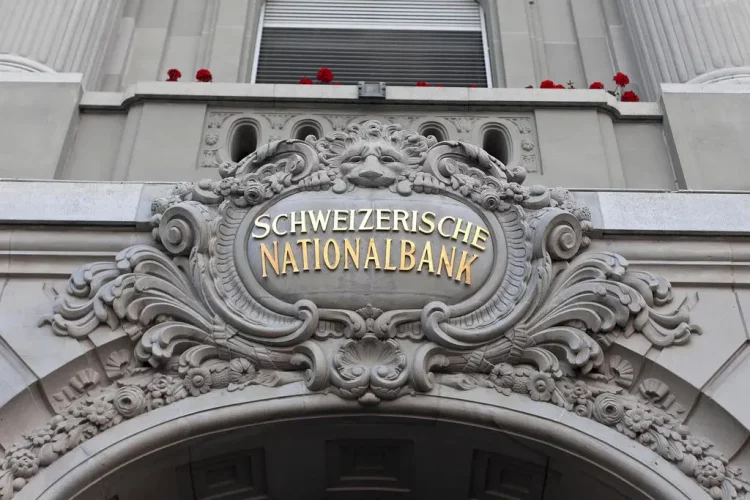In the world of central banking, every word spoken by officials is scrutinized with the utmost precision. These carefully crafted public statements can move markets, influence investor expectations, and shape the direction of national economies. However, as much as central bank officials work to communicate policy intentions through formal speeches and press releases, the true signals often lie in what isn’t said—the body language and the unsaid assumptions.
Among the more nuanced central banks, the Swiss National Bank (SNB) has become renowned not only for its monetary policy decisions but also for its careful and strategic communication, especially in the period leading up to its silent phases. A lesser-known aspect of central bank communication is the “verbal bomb disposal” technique—how seemingly innocuous changes in speech patterns, facial expressions, and body movements can predict major policy shifts, even black swan events.
In this article, we will explore how the blink frequency of Swiss National Bank officials during the silent period leading up to major policy announcements can act as an indirect signal of upcoming policy moves. We’ll break down the psychological aspects of central bank communication, the importance of reading between the lines, and how these non-verbal cues might help predict the next big move in global financial markets.
1. Central Banks and the Power of Communication
1.1 The Role of Central Bank Communication
Central banks are unique institutions in that their decisions are not only about the numbers but also about managing expectations. Policy decisions such as interest rate changes, quantitative easing, and currency interventions can have far-reaching consequences. Therefore, central banks have to ensure that they are seen as both credible and transparent to keep inflation expectations anchored and maintain market stability.
Communication is one of the most important tools central banks have at their disposal. The ability to guide public perception and investor sentiment is just as critical as the actions they take in the open markets. Central banks like the Federal Reserve, the European Central Bank (ECB), and the Swiss National Bank routinely hold press conferences, deliver statements, and issue speeches to signal their policy stance.
However, there’s a subtle art to central bank communication that goes beyond just the words spoken—non-verbal cues such as body language, facial expressions, and even the timing of silence can often give the real story.
1.2 The Swiss National Bank’s Reputation for Discretion
The Swiss National Bank (SNB) is known for its discretion in terms of communication. Switzerland, as one of the most stable and wealthy countries in the world, relies heavily on the Swiss Franc (CHF) as a safe-haven currency. Therefore, the SNB must tread carefully when discussing potential policy changes. Unlike other central banks that have a more direct communication strategy, the SNB is often much more circumspect, speaking in measured tones and often avoiding definitive guidance.
One of the most intriguing periods in the SNB’s communication strategy is its silent period—the time just before an official policy announcement. During this phase, officials tend to pull back from public discussions, and analysts pay close attention to every word and gesture, trying to read between the lines for any signs of impending policy moves.
2. “Verbal Bomb Disposal” and Central Bank Officials
2.1 Understanding the “Verbal Bomb Disposal” Concept
“Verbal bomb disposal” refers to the careful management of language and public statements made by central bank officials. Similar to diffusing a bomb, the goal is to avoid market chaos or speculation while still sending the necessary signals about the central bank’s policy direction. A failure to manage this effectively can lead to volatility or even a crisis of confidence in the central bank’s actions.
In the case of the Swiss National Bank, verbal bomb disposal becomes particularly crucial given the sensitivity of the Swiss Franc to global events. One wrong word, or even a misinterpreted gesture, can trigger massive market reactions. Therefore, SNB officials are highly trained to control their language and public demeanor, ensuring that the message they send out is as clear and predictable as possible.
2.2 The Role of Non-Verbal Cues in “Verbal Bomb Disposal”
While words are crucial, it’s the non-verbal cues that can often provide more insight into the true state of a central bank’s thinking. These include:
- Facial Expressions: A slight frown or a change in tone can indicate uncertainty or tension about the future.
- Blink Frequency: Psychologists have shown that when individuals are under stress or lying, their blink rate tends to increase. A change in blink frequency during a speech or press conference could signal a potential policy shift or internal hesitation about future actions.
- Body Language: A shift in posture, crossing arms, or sudden hand movements can indicate underlying discomfort or hidden information that is not being openly discussed.
By studying these physical manifestations, market analysts and traders can try to interpret what the central bank might actually be signaling beneath the surface.
3. Blink Frequency: The Unspoken Indicator of Policy Shifts
3.1 The Psychological Link Between Blinking and Stress
In psychological terms, blinking serves as a non-verbal cue that helps regulate emotional stress and information overload. When someone is anxious, overwhelmed, or uncertain, their blink rate tends to increase. This is a physical response to the mental pressure of processing too much information or dealing with stressful situations.
In the context of central bank officials like those at the Swiss National Bank, an increase in blink frequency during public speaking or interviews could be a subtle sign that the official is grappling with a particularly sensitive issue—perhaps a decision on interest rates, foreign exchange intervention, or market stability. By the same token, a reduction in blink frequency may indicate a more calm or reassured stance, perhaps signaling confidence in the current policy trajectory.
3.2 The SNB’s Silent Period and Its Blink Rate
As the Swiss National Bank approaches a silent period, the blink frequency of its officials often becomes an important metric to watch. During this time, when the central bank stops making public statements ahead of a policy decision, market participants scrutinize the last public remarks made by SNB officials for any signs of potential volatility.
If officials’ blink rates increase dramatically before the silence, it could indicate that the central bank is under stress about its next move or uncertain about how to manage the economic environment. Conversely, calm and deliberate speeches with fewer blinks may suggest a more stable outlook or that the officials are confident in their current stance.
3.3 Reading Between the Lines: Predicting Black Swan Events
When it comes to policy black swans—unexpected, high-impact events—central bank officials often try to convey subtle hints through their speech patterns, facial expressions, and non-verbal cues. A dramatic increase in blink rate could potentially signal that something unexpected is brewing behind closed doors, whether it’s a surprise change in interest rates, a major shift in currency policy, or an intervention to stabilize the economy.
By monitoring official speeches and analyzing the non-verbal indicators, market participants can gain a strategic edge in predicting these black swan events. Understanding the psychological pressure that SNB officials might be under during critical periods is key to understanding what might be happening behind the scenes.

4. Implications for Traders and Analysts
4.1 The Importance of Non-Verbal Communication in Market Prediction
For traders and financial analysts, being able to read between the lines of central bank communication—especially the non-verbal signals—can be the difference between predicting market shifts and missing a major policy change. Understanding the body language and psychological cues of central bank officials can provide valuable context for interpreting what is really going on inside the institution.
In particular, blink frequency serves as a subtle but powerful tool for identifying stress points and internal conflicts within the central bank. A sudden change in blinking patterns could be a signal that the SNB is preparing for a policy shift that could disrupt markets or lead to an unexpected policy decision.
4.2 Strategic Considerations for Investors
Investors can use the insights gleaned from central bank communications and non-verbal cues to adjust their portfolios accordingly. By anticipating potential policy moves or black swan events, investors can hedge their positions or take advantage of market opportunities before the official announcements are made.
5. Conclusion: The Subtle Art of Reading Central Bank
Signals The art of “verbal bomb disposal” is critical to understanding the underlying intentions of central banks, and particularly the Swiss National Bank, which has a reputation for strategic silence. By studying the blink frequency and non-verbal cues of officials during public appearances, investors and analysts can gain deeper insights into the true state of the economy and the potential for policy black swans.
In a world where market expectations can shift on a dime, being able to decode the unsaid signals can provide a significant advantage. For traders, understanding these psychological and physiological cues could be the key to staying ahead of the curve when central banks are on the brink of their next major move.














































